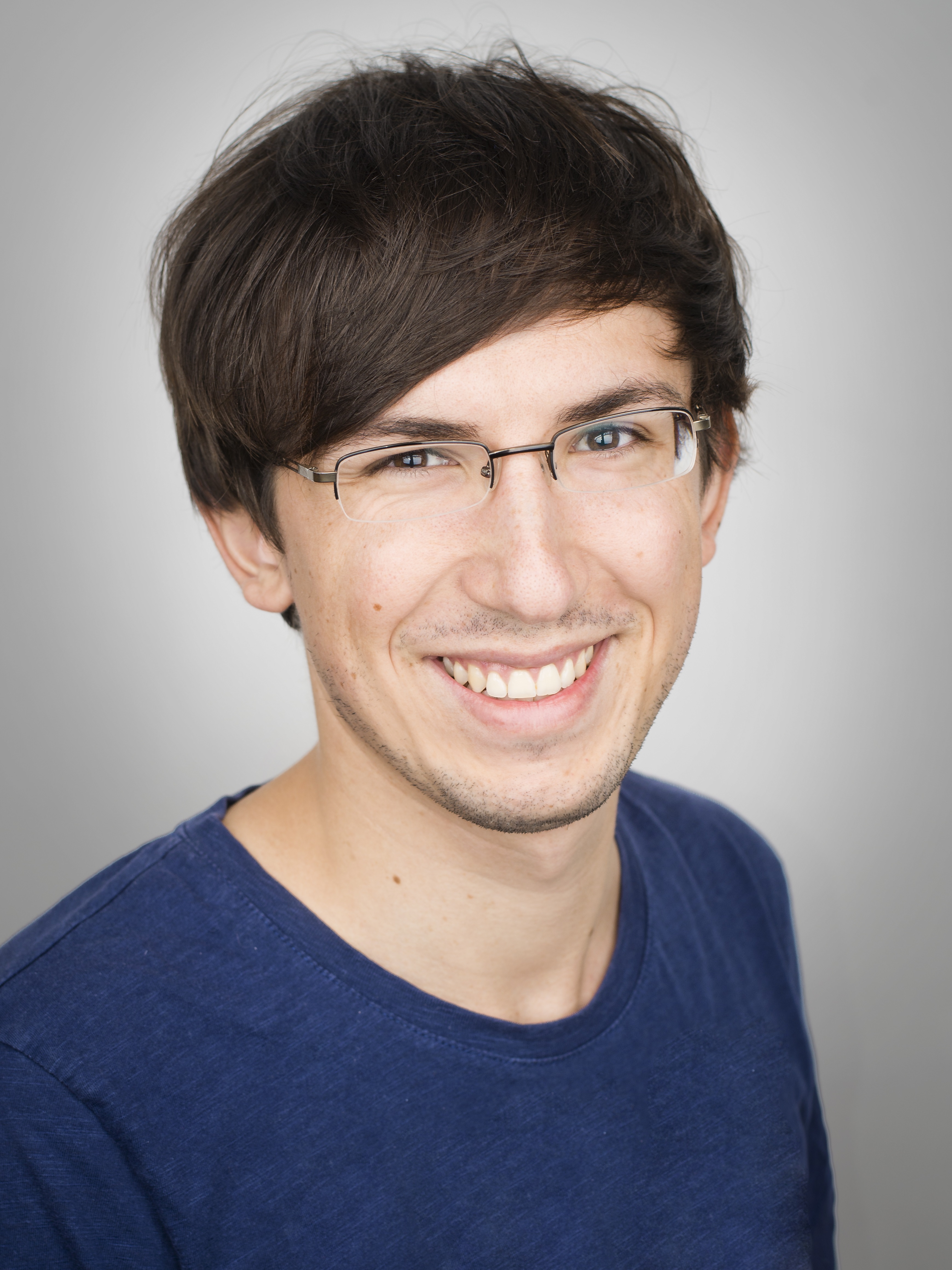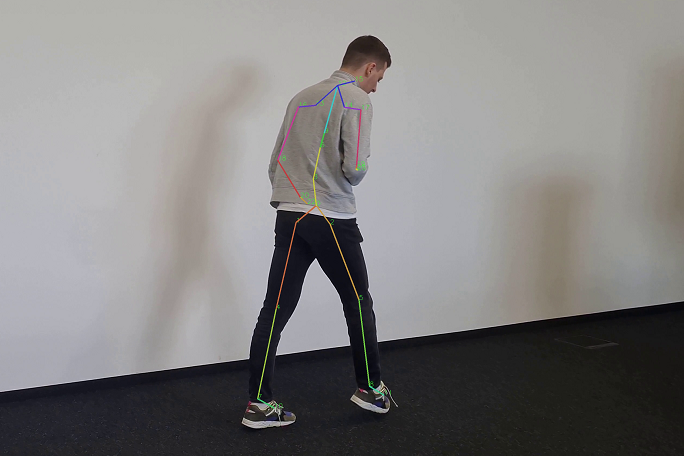Project SMARTGAIT
Safe and cost-effective analysis of neurological gait disorders with AI
Diseases such as stroke, Parkinson's disease and multiple sclerosis often impair the musculoskeletal system, resulting in gait disorders in those affected. Gait analyses play a crucial role in the successful evaluation and therapy of such disorders. However, current measurement methods are costly and time-consuming. The SMARTGAIT project is therefore developing an innovative AI-based system aimed at performing meaningful gait analyses with the help of simple smartphone video recordings.
 Dr. Manuel Stein, founder and managing director of Subsequent GmbH, initiated and coordinates the cooperative SMARTGAIT project. © Subsequent GmbH
Dr. Manuel Stein, founder and managing director of Subsequent GmbH, initiated and coordinates the cooperative SMARTGAIT project. © Subsequent GmbHAccording to findings from rehabilitation centres and physiotherapists, many patients treated for neurological disorders develop musculoskeletal system problems. Resulting gait disorders can have a considerable impact on the everyday lives of those affected, which is why targeted therapeutic countermeasures are needed. However, effective rehabilitation first requires analysing the gait to precisely identify the affected bone and muscle groups. Until now, expensive motion analysis systems have been used for this purpose, which can often only be operated by specially trained personnel. In addition, patients have to be wired to special sensors, which also makes the measurement procedure very time-consuming. "Apart from the time and cost factors, currently available motion analysis systems also have other disadvantages: rather than being used during the entire course of therapy, they are generally only used during anamnesis. This makes it impossible to evaluate whether the therapy is working or not in an individual. These motion analysis systems only provide a snapshot of the situation when the patient is in the rehabilitation centre or during physiotherapy, and are not suitable for carrying out gait analyses in everyday situations," explains Dr. Manuel Stein, founder and managing director of Subsequent GmbH from Konstanz. He initiated and coordinates the cooperative SMARTGAIT funding project, which started in August 2022.
Valid and cost-effective gait analyses thanks to bundled know-how from Lake Constance
The aim of the cooperative project is to develop a new system to support medical staff in the analysis of gait in people with neurological diseases. The focus is on data from simple smartphone video recordings, which will be evaluated using AI-based technology. The aim is to visualise interactive motion analyses and identify relevant analysis parameters. The researchers hope that this procedure will enable quick individual assessment of gait disorders, making it easier for medical professionals to compare rehabilitation courses. By combining innovative technologies, SMARTGAIT aims to minimise time-consuming and costly work steps and make valid gait analyses widely available for the first time. "In the future, patients will benefit from the immediate, objective feedback that SMARTGAIT provides. Furthermore, therapists will be able to tailor treatment measures and doctors will be able to precisely check and assess the effectiveness of these treatment measures," says Stein of the benefits of SMARTGAIT.
The project will last 24 months and has total funding of 430,000 euros, 69 percent of which comes from the German Federal Ministry of Education and Research (BMBF). In the project, Subsequent GmbH, which was awarded first prize in the "Digital Start-up of the Year 2023" competition run by the German Federal Ministry for Economics and Climate Protection, is working closely alongside the University of Konstanz. The Schmieder Clinics are an associated partner and contribute their knowledge as a central neurological specialist and rehabilitation hospital in the four-country Lake Constance region. In addition, the Allensbach-based Lurija Institute for Rehabilitation Sciences and Health Research is involved in the project as a subcontractor.
Markerless skeleton recognition enables efficient therapy monitoring
 The new motion analysis system developed by the SMARTGAIT project partners enables automated acquisition of 3D skeletal data with a smartphone. © Subsequent GmbH
The new motion analysis system developed by the SMARTGAIT project partners enables automated acquisition of 3D skeletal data with a smartphone. © Subsequent GmbH"The idea for SMARTGAIT came about during a meeting between the project partners involved, in particular Prof. Dr. Markus Gruber from the University of Konstanz, Prof. Dr. Joachim Liepert from the Schmieder Clinics and myself," says Stein describing the initial phase of the project. "The underlying question was how innovative skeletal recognition methods, which Subsequent GmbH already uses successfully in football and other sports, could also benefit clinical rehabilitation. The first information exchange came about during the Lurija research colloquium at the Schmieder Clinics, where, as I see it, the perfect partners for the project came together," Stein continues.
Subsequent GmbH’s role in the project is to develop precise, real-time tracking systems based on markerless skeletal recognition as well as visual-interactive motion analyses, which will eliminate the need for complex wiring of patients during gait analysis. This approach will then be expanded in cooperation with the Department of Sport Sciences’ Institute for Training and Movement Science at the University of Konstanz to integrate biomechanical and sensorimotor analysis of human gait. Following on from this, as part of an integrated research approach, the Lurija Institute will then carry out an evaluation to show whether the innovative AI-based motion analysis system can also be used in everyday life. This will test important parameters such as safety, user-friendliness and user acceptance. In a second step, SMARTGAIT will then be implemented in the Schmieder Clinics inpatient and post-inpatient neurological rehabilitation where it will actively contribute to improving gait screening and therapy monitoring efficiency.
Innovative AI-based motion analysis method benefits patients and medical staff
"What I find fascinating about the SMARTGAIT project is working on innovative AI-based approaches designed to make neurological rehabilitation faster and easier. Our goal is to make gait measurements non-invasive but as accurate as possible. Where the patient is at the time shouldn't matter," says Stein, describing his motivation for moving the SMARTGAIT project forward.
By the end of the funding phase, the project partners hope to have developed a SMARTGAIT prototype and implementedscientific testing of the gait analysis parameters identified. In addition, the researchers want to carry out a large-scale user study to validate the accuracy of the 3D skeletal data collected using smartphones. The study will include various end-user groups, such as patients, as well as doctors and physiotherapists.
The plan is that the new measurement method developed in the SMARTGAIT project will be used in both clinical and home settings to enable holistic assessment of gait disorders. This will benefit the people treating the patients as well as the patients themselves.